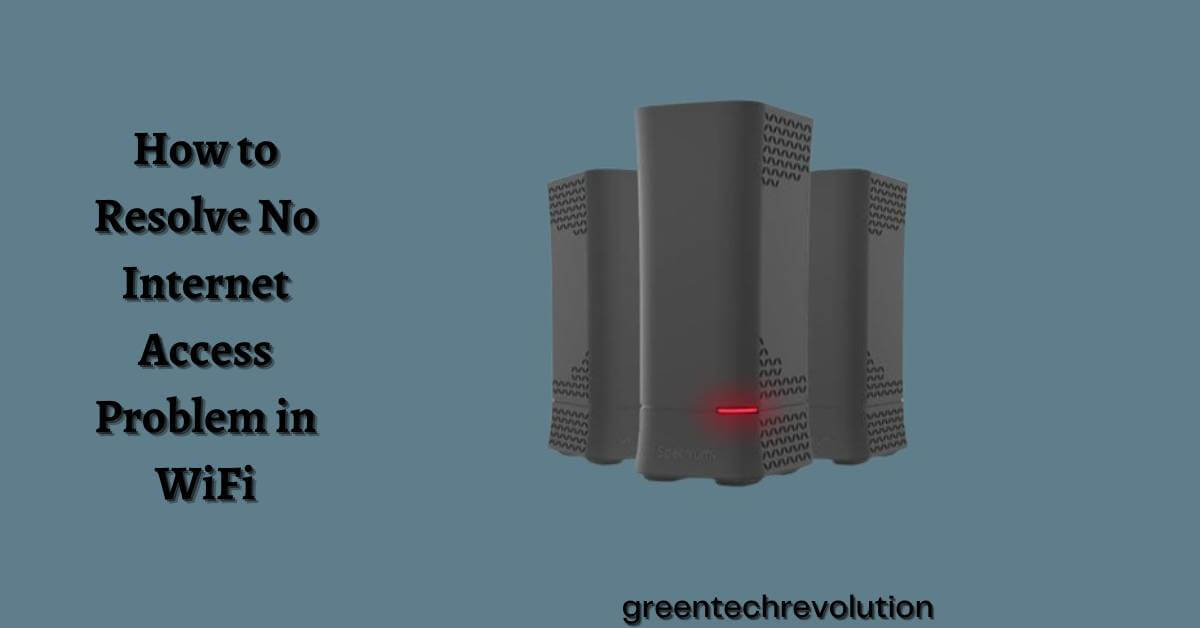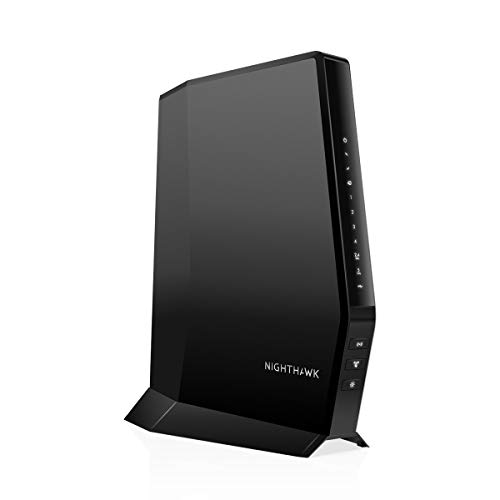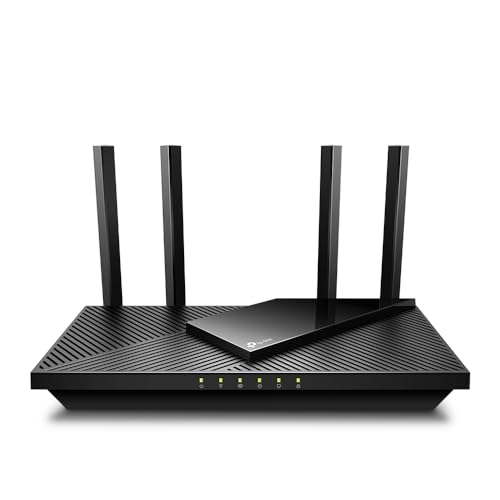How to resolve no internet access problem in wifi, try restarting your router or checking your network settings. Now let’s explore some solutions to this frustrating issue.
In today’s world, where everything is connected to the internet, being unable to access it can be a serious problem. This is especially true when it comes to wifi, which has become an essential part of our daily lives.
However, a common issue that users face frequently is the “no internet access” problem in wifi. It could happen due to various reasons, such as network congestion, router malfunction, or incorrect network settings.
Fortunately, with a little troubleshooting, this issue can be quickly resolved, and your wifi connection can be back up and running smoothly. In this article, we provide you with some practical solutions to help you fix this problem in no time.
Physical Connectivity Issues
No internet access is a frustrating issue in wifi that disrupts our work, entertainment, and online activities. Such issues are often curable by pinpointing and addressing the root cause of the problem. Physical connectivity problems are some of the typical culprits causing no internet access.
In this section, let’s examine these issues one by one and learn how to resolve them.
Checking Physical Connections
One of the primary reasons for no internet access is the physical disconnection of the devices. Here is how you can check if your devices are appropriately connected:
- First, check if your modem is correctly plugged in to ensure that it is receiving power.
- Next, check if the modem’s and router’s ethernet cables are securely connected. The cable should be fastened to the lan port on the router’s backside and the modem’s ethernet port.
- If you use a separate modem and router, ensure that the ethernet cable is correctly connected to those devices.
- Verify that all cables are free from wear, tear, and damage and replace them if necessary.
Resetting Modem
Another way to resolve no internet access is by resetting the modem. Follow these steps to reset your modem:
- First, turn off the modem using the power button or unplugging it.
- Wait for at least a minute, then turn the modem back on by pressing the power button or plugging it back in.
- Wait at least another minute to ensure that the modem fully powers up before trying to connect to the internet.
Restarting Router
Restarting the router may resolve any internet access issues caused by the router. Here are the steps to follow:
- First, turn off the router by either pressing the power button or unplugging it.
- Wait for at least a minute, then turn the router back on by pressing the power button or plugging it back in.
- Wait at least another minute to ensure that the router fully powers up before trying to connect to the internet.
Checking Ethernet Cable
Ethernet cables are the backbone of internet connectivity. Sometimes, they can be the reason behind no internet access. Follow these steps to check if your ethernet cable is working fine:
- First, inspect your ethernet cable for any visible damage.
- Make sure the cable is completely connected to the modem and router’s ethernet ports.
- If there is no visible damage, try using a different ethernet cable to check if the problem is with the cable or not.
Resetting Network Adapter
At times, network adapters can malfunction, causing no internet access. Follow these steps to reset the network adapter:
- First, click on the start button and type “cmd.”
- Right-click on the command prompt result and select “run as administrator.”
- Type “netsh winsock reset” in the command prompt and press enter.
- After the command runs successfully, restart your pc.
Updating Network Drivers
Outdated network drivers can cause no internet access in wifi. Follow these steps to update your drivers:
- First, click on the start menu and type “device manager.”
- Click on “network adaptors.”
- Right-click on the network driver and select “update driver.”
- Select “search automatically for updated driver software”.
- Wait for the driver to update.
By following these steps, you can resolve the physical connectivity issues leading to no internet access in wifi.
Software Connectivity Issues
When you encounter a problem with your wifi, sometimes it’s not a hardware issue. Instead, it could be a software problem caused by connectivity issues. Here are some steps to resolve the problem:
Checking Wifi Signal Strength
- Check how many bars your wifi connection has. If it’s low, move closer to the wireless router.
- Make sure there are no objects or barriers blocking the router.
Troubleshooting Network Problems
- Check if other devices have internet access on the same network. If they don’t, the issue could be with the router or internet connection.
- Restart both the modem and wireless router to reset the network connection.
Running Network Diagnostics
- Use the built-in network diagnostics tool on your computer or smartphone to identify any problems with the network or hardware.
- Follow the prompts to resolve any issues.
Flushing Dns Cache
- Dns cache is a temporary memory that stores website information for faster loading. Sometimes, it can cause issues. To clear the cache, follow these steps:
- Open command prompt (windows) or terminal (mac)
- Type “ipconfig /flushdns” and press enter.
Renewing Ip Address
- Your ip address may have expired or been blocked, causing connectivity issues. Here are the steps to renew it:
- Open command prompt (windows) or terminal (mac)
- Type “ipconfig /release” and press enter.
- Type “ipconfig /renew” and press enter.
Disabling Firewall
- In rare cases, the firewall on your computer or router could be blocking internet access. Here’s how to disable it:
- Open the firewall settings on your computer or router.
- Turn off the firewall and check if the issue is resolved.
By following these steps, you can troubleshoot and resolve software connectivity issues with your wifi, ensuring you have a speedy and stable internet connection.
Other Factors To Consider
Apart from the common issues that cause a “no internet access” problem in wi-fi, some additional factors could be responsible. Let us discuss these factors in detail.
Checking For Interference
Wireless networks can get disrupted by numerous interferences. Identifying the source can help you resolve the problem effectively. Here are some common sources of interference:
- Neighboring wi-fi networks: Check if the surrounding wi-fi networks use the same channels as you. If yes, switch to a different channel from your router’s settings.
- Bluetooth devices: Bluetooth devices such as speakers, headphones, and smartwatches may interfere with wi-fi signals. Try disabling the bluetooth feature on the devices temporarily to see if it resolves the issue.
- Electronic devices: Other devices that use radio frequencies such as baby monitors, microwaves, and cordless phones can also cause interference. Ensure that these devices are not placed next to your wi-fi router.
Updating Router Firmware
An outdated router firmware can lead to several connectivity issues. Check if your router’s firmware requires an update. Here is how you can it:
- Open the router’s settings page on your browser by typing the default ip address in the address bar.
- Locate the ‘firmware update’ or ‘router upgrade’ option in the settings menu and click on it.
- Follow instructions provided in the firmware update wizard to update the firmware to the latest version.
Resetting Router To Factory Settings
If none of the methods work, resetting your router to its factory settings may fix the issue. Here is how to do it:
- Locate the ‘reset’ button at the back of the router.
- Press and hold the button for 10-15 seconds using a paper clip or a pin.
- The power light of the router will start flickering, and the router will restart automatically.
- Once the reset process is complete, login to router’s settings and set it up again.
By following these steps, you can resolve the no internet access problem in wi-fi and enjoy uninterrupted connectivity. Remember to try these methods in sequence and identify the root cause of the issue before attempting the solutions.
Frequently Asked Questions For How To Resolve No Internet Access Problem In WiFi
Why My WiFi Says No Internet Access?
This error occurs when the device is not able to connect automatically to a network or if there is an issue with the isp.
How Do I Fix No Internet Access Wifi On My Laptop?
To fix wifi connectivity issues on your laptop try restarting your router, updating the drivers, or resetting the network settings.
What Causes No Internet Access Wifi Errors?
No internet access wifi errors can be caused by issues related to the router, wifi settings, outdated drivers, or isp network issues.
Why Is My Wifi Connected But Not Working?
When your wifi is connected but not working, it could be due to connectivity or signal issues, network driver problems, or issues with the router.
How Can I Troubleshoot My Wifi Connection?
You can troubleshoot your wifi connection by checking cables and ports, resetting your network settings, or contacting your isp if there is a network issue.
How Do I Reset My Wifi Settings On My Laptop?
To reset your wifi settings on your laptop, go to your network settings, select your wifi network, and click on the ‘forget’ option or reset your router.
What Should I Do If My Wifi Doesn’T Have Internet Access?
If your wifi doesn’t have internet access, turn off your router, check for firmware updates, reset your network settings or contact your isp for further assistance.
How Can I Confirm If My Isp Is The Problem?
You can troubleshoot your internet connection problem by connecting with various devices or contacting your isp if there are network outages in your area.
Can Outdated Drivers Cause Wifi Connection Errors?
Yes, outdated drivers can cause wifi connection errors. Visit your device manufacturer’s website to update your drivers.
How Do I Fix Unstable Wi-Fi Connections?
To fix unstable Wi-Fi connection issues, restart your router, use an ethernet cable, or disable background applications, or try changing the channel on your router.
Final Thoughts
It can be pretty frustrating to face no internet access problems in Wi-Fi, but luckily there are easy fixes. Some of the most commonly faced issues are related to the router, modem or internet service provider.
Try resetting the router or modem, updating the firmware, checking the router’s location and settings or contacting your isp for assistance.
You can also troubleshoot the connection on your device by turning wifi off and on again or deleting and then re-adding the network. It is important to remember that problems can arise due to a variety of reasons and each issue has a specific fix, so patience and thoroughness are key.
By following the above-mentioned tips, you can easily fix the no internet access issue and stay connected to the online world.
Always remember to take notes of the steps you took to troubleshoot, it will save you time in future when facing similar issues.



Leave a Reply
You must be logged in to post a comment.